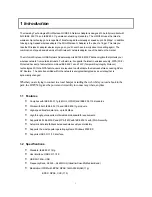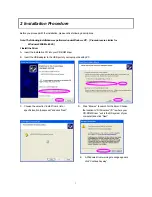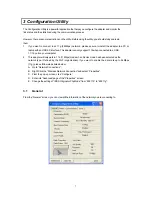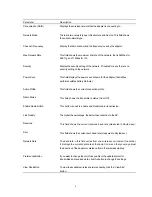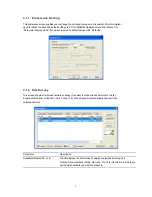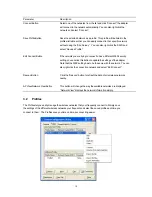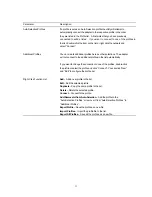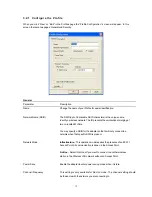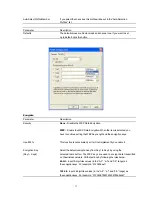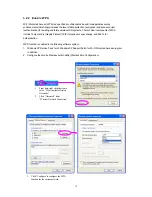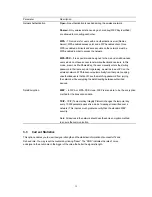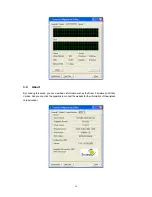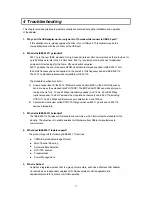
15
Parameter
Description
Network Authentication
Open
–No authentication is needed among the wireless network.
Shared
– Only wireless stations using a shared key (WEP Key identified)
are allowed to connecting each other.
WPA
– This mode is for users with an authentication server (Radius
Server), WPA-enabled access point, and a WPA-enabled client. Once
WPA is enabled, all clients and access points on the network must be
WPA-enabled in order to access the network.
WPA-PSK
– It is a special mode designed for home and small business
users who do not have access to network authentication servers. In this
mode, known as Pre-Shared Key, the user manually enters the starting
password in their access point or gateway, as well as in each PC on the
wireless network. WPA takes over automatically from that point, keeping
unauthorized users that don't have the matching password from joining
the network, while encrypting the data traveling between authorized
devices.
Data Encryption
WEP
– In WPA or WPA-PSK mode, WEP is also able to be the encryption
method for the transmission data.
TKIP
– TKIP (Temporal Key Integrity Protocol) changes the temporal key
every 10,000 packets (a packet is a kind of message transmitted over a
network.) This insures much greater security than the standard WEP
security.
Note: All devices in the network should use the same encryption method
to ensure the communication.
3.3
Current Statistics
This option enables you to view the signal strength and the statistical information of successful Tx and
Rx baud rate. You may reset the counters by clicking “Reset”. The “SNR” indicates the rate of noise
and signal in the environment, the bigger of the value, the better the signal strength.
Summary of Contents for HWU54G
Page 1: ......

